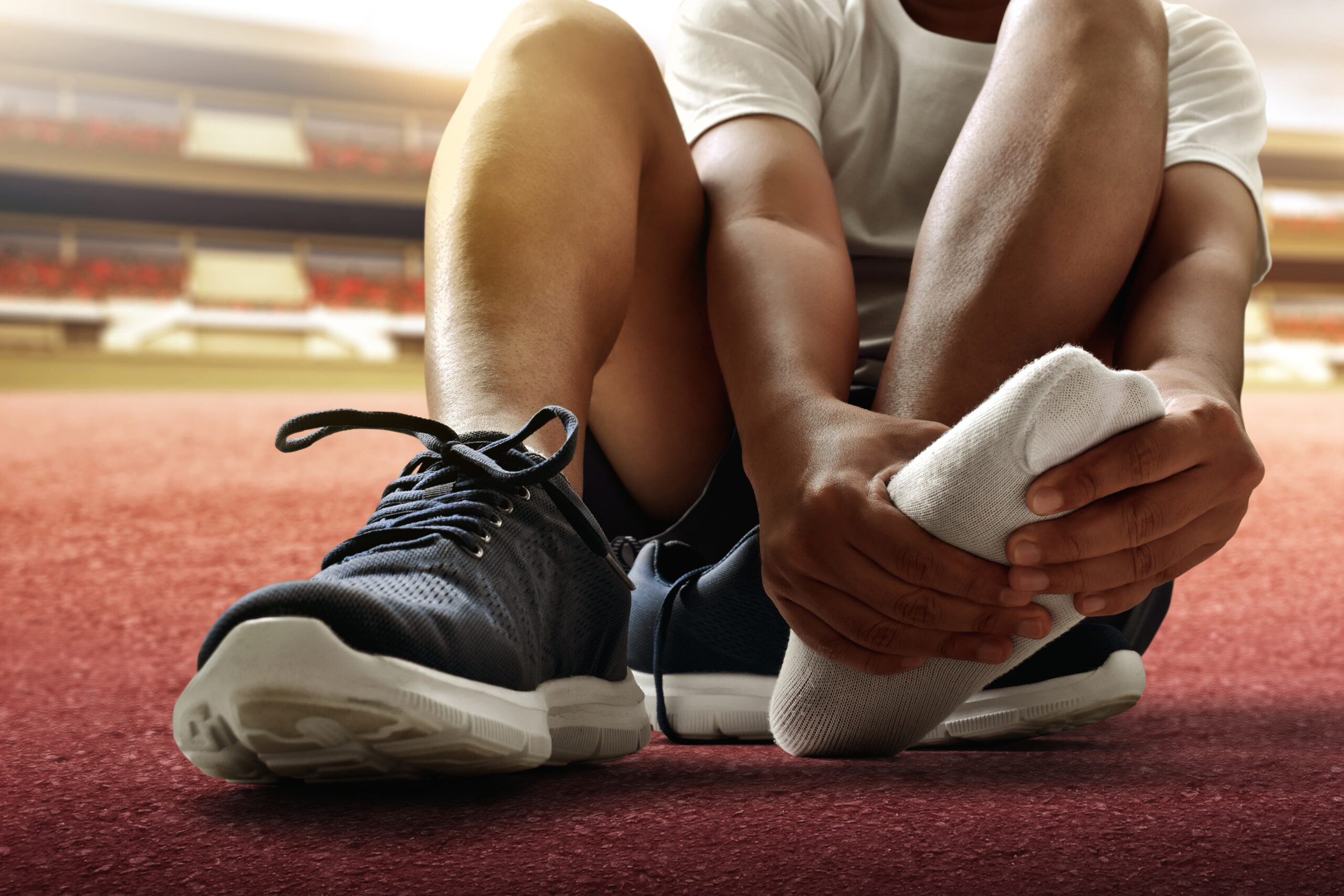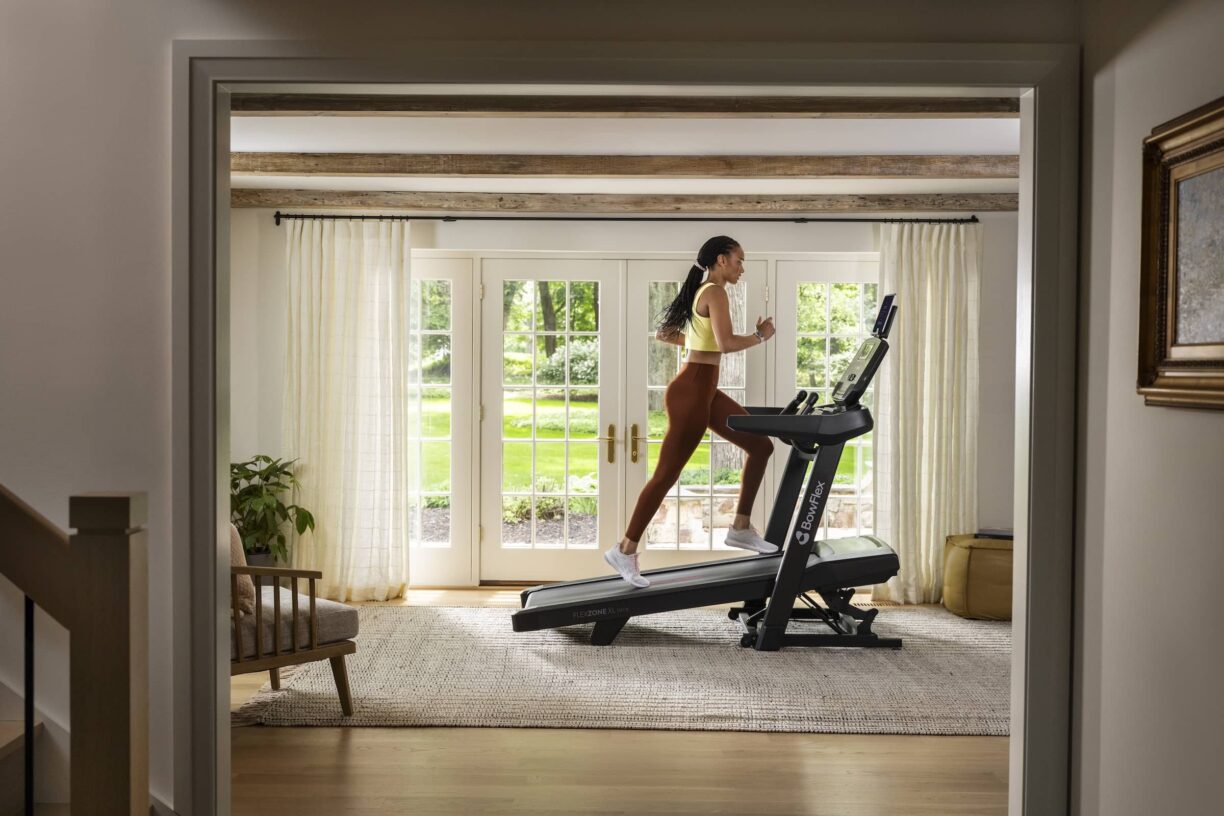Whether you’re running, doing HIIT training, playing a sport, or dancing, your feet often bear the brunt of the pressure.
Along with the fact that they contain a quarter of the body’s bones and over 200 tendons, ligaments, and muscles, this means they’re especially susceptible to exercise-related injuries.
But if you support your body and take the time to learn how to work out safely, you can prevent most of these injuries. Here’s how to look out for your feet!
Ankle Sprains and Strains
The ankle may not technically be part of the foot, but ankle injuries are so common that we can’t leave them out.
First, let’s clear up the difference between a sprain and a strain. A sprain occurs when the ankle ligament stretches or tears. The cause of this can be a fall or an unnatural twist.
On the other hand, strains refer to muscle tissue that has stretched or torn through overextension. Poor form when doing any physical activity often causes these injuries, such as running, jumping, or simply from repetitive stress.
The best way to avoid ankle sprains and strains is to work on mobility, flexibility, strength, and balance. Basically, you need to back up your high-intensity workouts with stretching, as well as strength and balance training.
If you’re susceptible to sprains, you may want to look into special exercises that improve your ankle strength. You can also tape up your ankle when you exercise to give it some extra support.
Achilles Tendinitis
Achilles tendinitis happens when your Achilles tendon becomes inflamed. It’s a common injury in sports that requires sudden changes in speed or quick pivots, and is generally a result of overuse and wear-and-tear.
It often occurs in runners who have suddenly increased the intensity or duration of their runs, or in highly active middle-aged or elderly people.
Of course, we don’t want age to prevent anyone from keeping fit! So to prevent Achilles tendinitis, remember that slow and steady wins the race.
If you’re starting a new fitness regimen or a different type of exercise, start slow at first and then step up the intensity or duration of your training gradually. If you’re going to do an activity that puts a lot of pressure on your Achilles tendon—such as hill running—be sure to warm up properly first.
As with most of these injuries, prevention lies in strength and flexibility. Remember to stretch your calves and Achilles tendons before and after exercise, and to do exercises that strengthen your calf muscles. In addition, alternate your high-impact workouts with more low-impact activities like cycling and swimming.
Plantar Fasciitis
You may not have heard of it, but this injury is becoming increasingly common. The plantar fascia is basically what you call the band of tissues that’s supporting the arch of your foot.
These tissues can take strain from activities like running, dancing, and high-impact workouts. This strain causes pain at the bottom of your heel.
Plantar fasciitis is another overuse injury, so just like Achilles tendinitis, the best preventative measures are stretching, improving calf strength, and varying your workouts.
In addition, don’t forget to stretch the feet themselves, particularly the sole. Your feet work hard and need stretching too!
It’s important to note that the frequent wearing of high heels or shoes with no support can also lead to plantar fasciitis.
Choose your shoes carefully, both for working out and daily life. In addition, avoid working out barefoot on hard surfaces. Being barefoot may be natural, but hard surfaces aren’t.
Stress Fractures
Stress fractures refer to tiny cracks in the bone caused by repetitive stress to the feet and ankles. They’re common in runners, dancers, and athletes who play sports such as basketball or tennis.
Like many other stress-related foot injuries, the cause stems from repeated impact on the bone where our muscles aren’t able to absorb stress.
Any foot or ankle bones are vulnerable to stress fractures, but they’re most common in the third metatarsal (the long middle bone of your foot).
Just like with the other stress-related injuries, you can prevent stress fractures by taking it slow and steady when you start a new fitness practice or cross-training.
Not only that, it’s important that you wear footwear with enough cushioning. Make sure you’re getting enough nutrition for strong bones by including calcium and Vitamin D in your diet as well.
Neuroma
Neuroma refers to a pinched nerve in the foot. It’s often experienced as a tingling numbness or pain in the ball of the foot.
If you feel pain between your toes when walking, this may be a symptom of neuroma. A variety of factors such as overuse, wearing the wrong size or fit of shoe, and trauma can cause this injury.
To prevent neuroma, make sure that your footwear both fits you well and supports your feet in the type of exercise you’re doing.
For those with particularly flat feet or high arches, wearing orthotic inserts in your shoes can be helpful.
And again, don’t only think about your workout shoes—you need to support and cushion your feet in your everyday life too, particularly if your job involves a lot of standing or walking.
Be a Smart Athlete
Being the best athlete you can be doesn’t just involve pushing yourself as hard as you can, it also involves being smart.
This means making sure you’re always cultivating good fitness habits, supporting your body by stretching, practicing balance, and developing strength.
Being smart means planning your exercise regimen so that you alternate between high-impact and low-impact workouts. It means making sure you wear shoes that support and cushion your feet.
It also means being attuned to your body and to any pain or discomfort so that you know when to take a step back and evaluate, or simply take a break.
No-pain-no-gain only refers to working through fatigue, not damage to the body!
You can’t be the best version of yourself if you’re hurting your body with your workouts. Exercise should keep your body healthy, not harm it. So be gentle with yourself, put your best foot forward, and train smarter, not harder.





